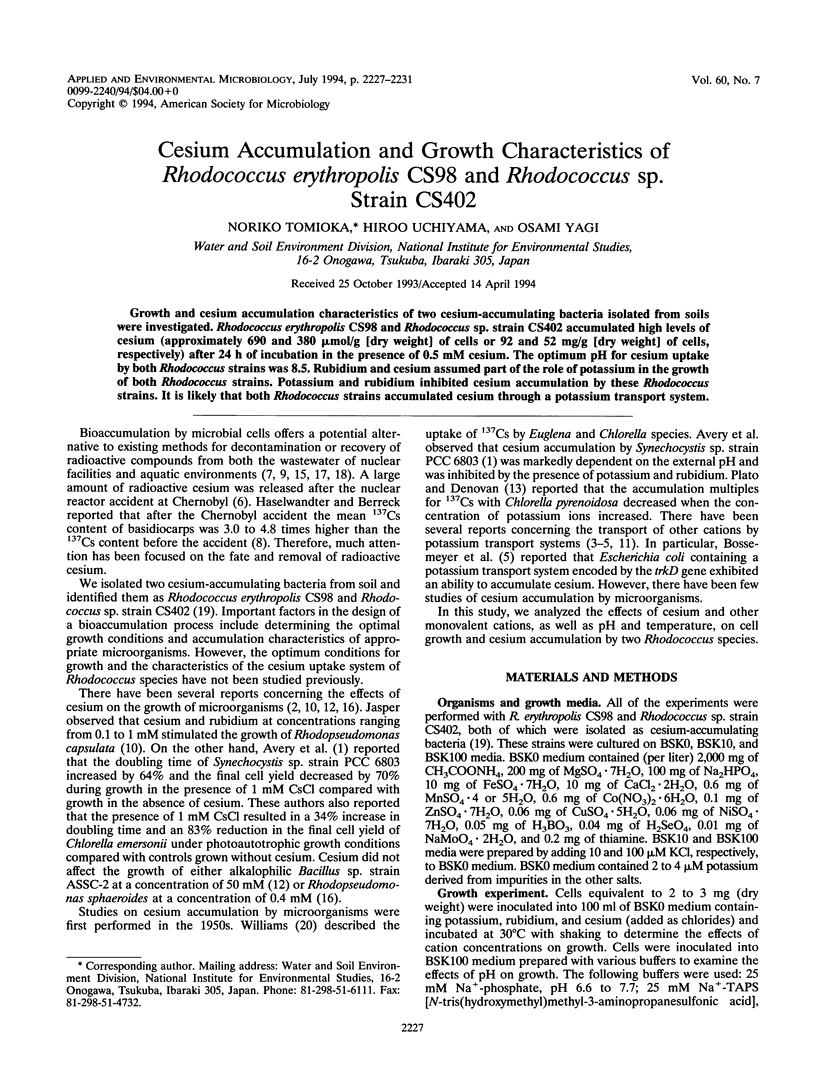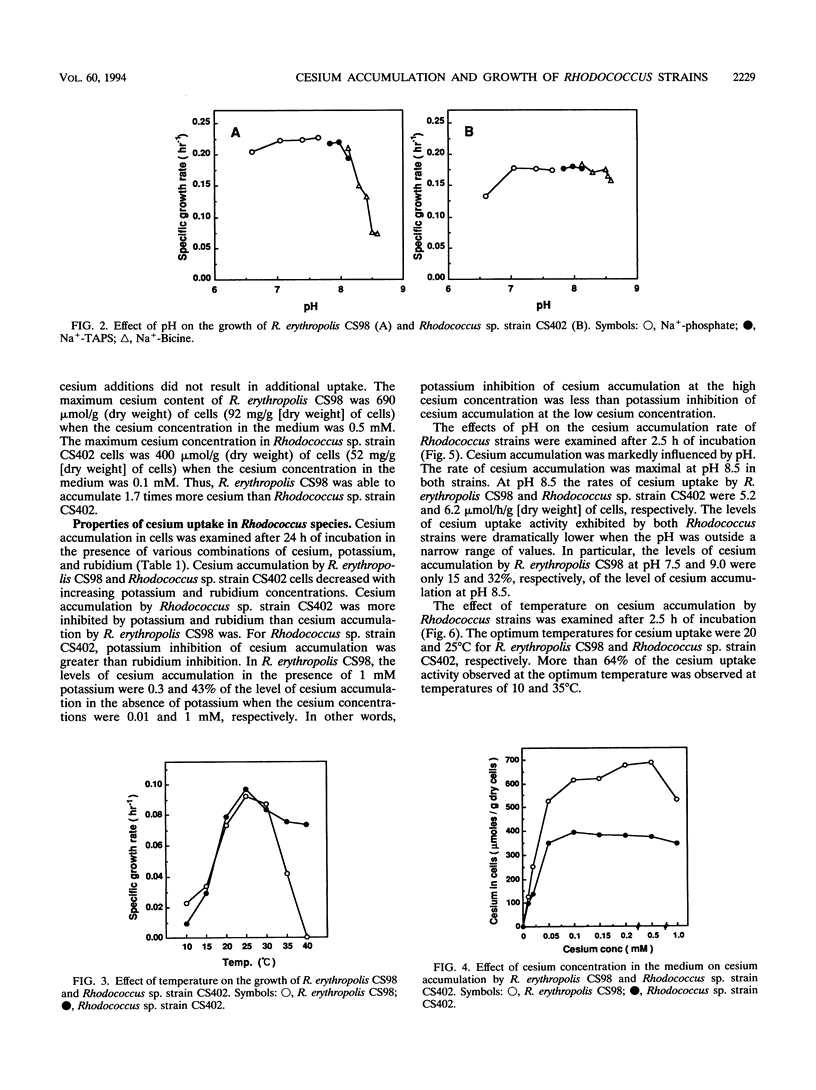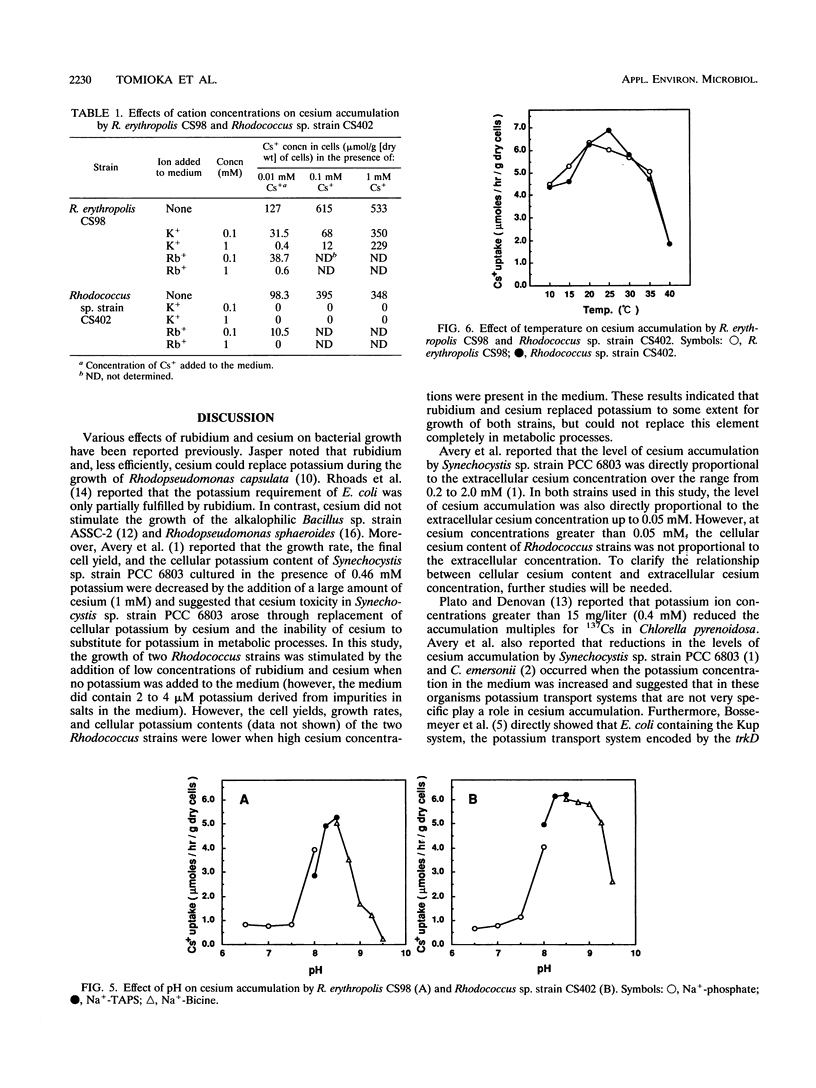Abstract
Growth and cesium accumulation characteristics of two cesium-accumulating bacteria isolated from soils were investigated. Rhodococcus erythropolis CS98 and Rhodococcus sp. strain CS402 accumulated high levels of cesium (approximately 690 and 380 μmol/g [dry weight] of cells or 92 and 52 mg/g [dry weight] of cells, respectively) after 24 h of incubation in the presence of 0.5 mM cesium. The optimum pH for cesium uptake by both Rhodococcus strains was 8.5. Rubidium and cesium assumed part of the role of potassium in the growth of both Rhodococcus strains. Potassium and rubidium inhibited cesium accumulation by these Rhodococcus strains. It is likely that both Rhodococcus strains accumulated cesium through a potassium transport system.
Full text
PDF




Selected References
These references are in PubMed. This may not be the complete list of references from this article.
- Bossemeyer D., Schlösser A., Bakker E. P. Specific cesium transport via the Escherichia coli Kup (TrkD) K+ uptake system. J Bacteriol. 1989 Apr;171(4):2219–2221. doi: 10.1128/jb.171.4.2219-2221.1989. [DOI] [PMC free article] [PubMed] [Google Scholar]
- Jasper P. Potassium transport system of Rhodopseudomonas capsulata. J Bacteriol. 1978 Mar;133(3):1314–1322. doi: 10.1128/jb.133.3.1314-1322.1978. [DOI] [PMC free article] [PubMed] [Google Scholar]
- Kobayashi H. Second system for potassium transport in Streptococcus faecalis. J Bacteriol. 1982 May;150(2):506–511. doi: 10.1128/jb.150.2.506-511.1982. [DOI] [PMC free article] [PubMed] [Google Scholar]
- Rhoads D. B., Woo A., Epstein W. Discrimination between Rb+ and K+ by Escherichia coli. Biochim Biophys Acta. 1977 Aug 15;469(1):45–51. doi: 10.1016/0005-2736(77)90324-8. [DOI] [PubMed] [Google Scholar]
- SISTROM W. R. A requirement for sodium in the growth of Rhodopseudomonas spheroides. J Gen Microbiol. 1960 Jun;22:778–785. doi: 10.1099/00221287-22-3-778. [DOI] [PubMed] [Google Scholar]
- Strandberg G. W., Shumate S. E., Parrott J. R. Microbial Cells as Biosorbents for Heavy Metals: Accumulation of Uranium by Saccharomyces cerevisiae and Pseudomonas aeruginosa. Appl Environ Microbiol. 1981 Jan;41(1):237–245. doi: 10.1128/aem.41.1.237-245.1981. [DOI] [PMC free article] [PubMed] [Google Scholar]
- Tomioka N., Uchiyama H., Yagi O. Isolation and characterization of cesium-accumulating bacteria. Appl Environ Microbiol. 1992 Mar;58(3):1019–1023. doi: 10.1128/aem.58.3.1019-1023.1992. [DOI] [PMC free article] [PubMed] [Google Scholar]


